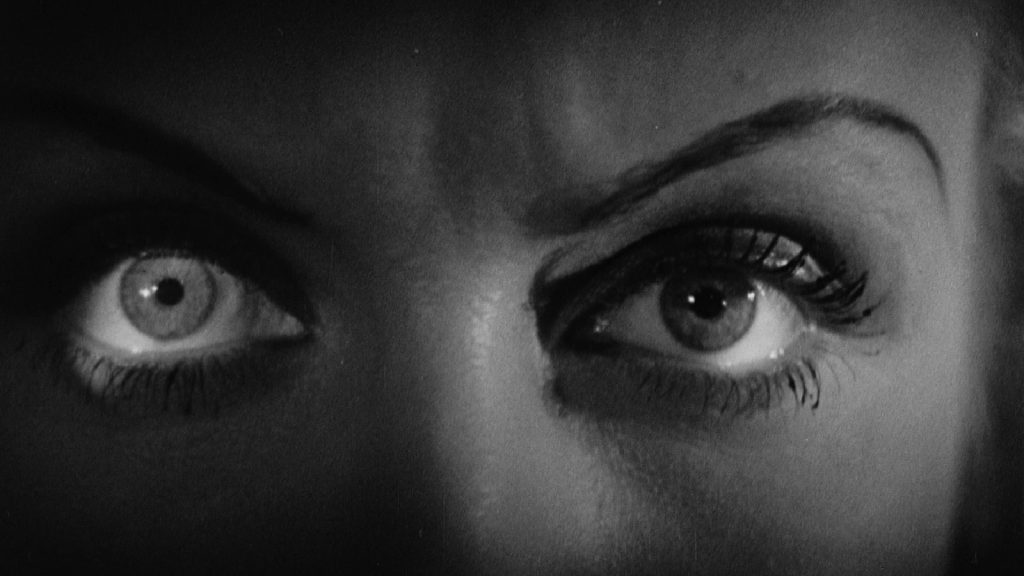
No other horror movie has ever matched the elemental perfection of Jaws. There are the avowed summits of the genre, for sure, but even such cornerstones of screen terror as Psycho, The Shining, Carrie, and The Texas Chain Saw Massacre don’t quite attain the primal ingeniousness of Steven Spielberg’s shark tale. It’s so simple as to be utterly profound: there’s something out there, under the water, you can’t see it coming, but it’s very real and it’s going to kill you. As the masterful opening scene proves—and as Spielberg’s infamously difficult mechanical beast forced him to demonstrate—you don’t need to see what’s off-screen to be scared. Chrissie Watkins’s screams for help while being dragged under the water by that pitiless fish didn’t just sound the alarm for a new kind of American summer blockbuster, they signaled an existential American terror based in a frightening reality. This could happen to you.
Of course, Spielberg would never have been able to change cinema with just a big shark. In addition to the still shockingly nasty death scenes—most unforgettably the blood-sprayed, inflatable-raft killing of little Alex Kintner (this movie was PG!)—Jaws is smart enough to know you have to care about its characters. The trio of men at the center of the story remain remarkably well-drawn, captivating figures: Roy Scheider’s Police Chief Brody, trying to do the right thing in his newly adopted resort town of Amity Island after a spate of shark attacks, yet thwarted again and again by the callous mayor, who refuses to close the beaches for fear of ruining the economy (a situation oft recalled during the height of the COVID-19 pandemic); Richard Dreyfuss’s increasingly exasperated oceanographer Hooper, who becomes Brody’s right-hand in trying to spread caution; and Robert Shaw’s obsessive Ahab-like shark hunter Quint, a near-parody of grizzled machismo, who ends up tagging along with the other two on the fateful, final mission to kill the monster, only to meet the stickiest end of them all.
Spielberg’s filmmaking is so consistently thrilling, even after countless viewings, that one would be forgiven for thinking that no one has ever done it better. It’s an ambitious, arduously made movie that feels somehow economical and effortless. Like the best of Hitchcock, it plays the audience like a piano—see it with a crowd on the big screen if you aren’t convinced. Every jump scare, every gross-out, every laugh hits the target. Yet this is not merely an example of well-made entertainment: it’s a kind of ne plus ultra of the form. Spielberg used cinematic grammar to scare people so badly that they stopped going into the water. I can think of no greater testament to the power of horror movies than that. 🩸

is Editorial Director at Museum of the Moving Image; cofounder and editor of the online film magazine Reverse Shot, a publication of MoMI; a longtime contributor to The Criterion Collection, where he programs the Criterion Channel series “Queersighted”; and the author of Films of Endearment (Hanover Square Press, 2021).
In 1983, JoBeth Williams appeared in the ensemble of Lawrence Kasdan’s The Big Chill, thus immortalizing herself as an avatar for white baby boomery.
BY MICHAEL KORESKY | September 30, 2022
Four years after he put aside the satirical, political experiments that defined his early career to make his first true thriller, the macabre and meticulously Hitchcockian Sisters (1972), Brian De Palma released...
BY MICHAEL KORESKY | June 14, 2022
With only three brisk features over 16 long years, Sean Byrne has become perhaps the most fervently anticipated horror filmmaker, to the frustration of impatient fans. His latest, Dangerous Animals...
BY LAURA KERN | June 6, 2025

This pre-Code offering packs a lot of story into its typically brisk running time, with several plot threads weaving together a (not always successful) tapestry of spooky and criminal doings.
READ MORE >
BY ANN OLSSON | Month 00, 2021

In what could be the fastest-resulting rape revenge movie, a drunken lout brutally forces himself on Ida, the young woman who doesn't return his affections, during a party over Labor Day.
READ MORE >
BY LAURA KERN | Month 00, 2021

Beast is a lot of movies in one package - fractured fairy tale, belated-coming-of-age story, psychological drama, regional horror film - but above all it's a calling card for its leading lady, Jessie Buckley.
READ MORE >
BY LAURA KERN | Month 00, 2021